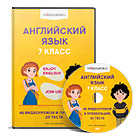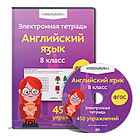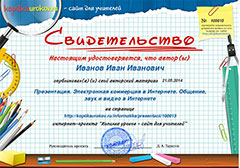Zhunusova Saule
Erkenovna
The date:
8 “A” - ____________
Subject: English
Grade: 8 “A”
Students number-13
The theme of the lesson:
“Talk about coincidences”
The resources of the lesson
Teacher’s book, student’s book, internet, CD-ROM
The aids of the lesson
Flipcharts, puzzles, flags, Estimated sheets, CD-ROM, microphone, video of physical education, video grammar material, test, stickers, colors pens.
The aim of the lesson
To use grammar material “Past continuous and past simple”.
The objectives of the lesson
- Develop and improve the monological and dialogical speech.
- Develop the written language.
- Practice their skills and habits in writing and reading
· Practice their skills and habits in speaking and listening
- Use grammar material “Past continuous and past simple”.
- Describe events in the past
- Talk about coincidences
- Develop their logical thought and interest to study English
The type of the lesson
New lexical and grammar lesson
The methods of the lesson
Work in groups, work in pairs, individual work
Time
Teacher’s Role
Student’s Activity
The organization
Moment.
4 min.
Teacher has a dialogue with students
Greeting:Good morning!
Take your seats please.
How are you today?
I’m fine thank you!
I’m very glad to see you!
Calling the register:
Who is on duty today?
What date is it today?
Who is absent today? (Flipchart №1)
Teacher asks students come to teacher’s table and choose one piece of the puzzle, then find the other parts of the puzzle which have other students by this way they will collect three pictures and compound three groups.
Teacher puts the flag according their pictures on the table to each group (Application № 1, № 2)
Teacher gives the “Estimatedsheets” and describes how to fill it.(Application №3)
Students has dialogue with teacher.
Greeting:Good morning!
We are fine thank you and you?
We are very glad to see you too!
Calling the register:
I’m on duty today.
Today is the__________.
Today is_____________.
All are present. (dialogue between teacher and student.
Students come to teacher’s table and choose one piece of the puzzle, then find the other parts of the puzzle which have other students by this way they will collect three pictures and compound three groups.(work in class)
Students listen the explanation.
(individual work)
Checking home task.
2 min.
Teacher asks the home task. What was your home task? Let’s check it. (Flipchart № 2)
Teacher asks students to change their copybooks with their classmates and to compare the right answer on the white board with their answer. (Flipchart № 3)
Students answer. Our home task was exercises 1-3 at page 12 (Work book). (dialogue between teacher and student)
Students change their copybooks with their classmates and compare the right answer on the white board with their answer. (work in pairs) Estimate.
Following up activities.
20 min.
- Introduction
Teacher asks students to pay attention to the rebus and find the key word of the lesson. (Flipchart № 4)
Answer: Twins (Flipchart № 5)
Teacher reads the theme of the lesson then asks to open their student’s book at page 28-29 (Flipchart № 6)
Share your ideas 1.
Uses the photo of the two boys teacher introduce the word twins.
Asks to reads out the questions in turn and share with their opinions. Explains the meaning of telepathic.
Questions:
Do you know any twins?
Would you like to have a twin brother or sister?
People say that twins are often telepathic.
Do you think that's possible? (Flipchart № 7)
Presentation 2 (a)
While I was playing baseball…
Asks students to identify the girl in the photo (Clare).
Then asks them to look at the two sets of pictures beside the dialogue. Makes it clear that the boys in both sets of pictures are the same pair of twins at different ages.
Asks students to describe what's happening in the pictures. Introduces the key words hit, bleed, smoke, pan and catch fire. (Flipchart № 8)
Presentation 2 (b)
Explains the meaning of coincidence and helps with the pronunciation.
Asks the question and then plays the recording with books closed. (Application № 4 CD-ROM)
Answer: Two.
Teacher asks to read the dialogue by role. (Application № 5)
Then asks the main idea of the dialogue.
Presentation 2 (c) (Flipchart № 9)
Plays the recording again while students listen and read. Pauses to elicit or explain the meaning of new words (for example in trouble, while, smelt, full of, weird.) Points out that while can be used instead of when with past continuous verbs. Explains that smelt is the irregular past form of the verb smell. Asks some questions to check comprehension. For example:
-How old were the boys when this event happened? (About eight.)
-What happened to Toby? (The ball hit him in the face.)
- Where was Chris? (He was inside.)
-Who was in the car? (Toby and his father.)
-Was there a problem with the car (No.)
-Where was the smoke? (At home, in the kitchen.) (Flipchart № 10)
Picks out examples of past simple verbs. Asks students to say the infinite form of irregular past verbs.
Draws attention to the words of the past continuous and drills some of these verbs for example.
-I was playing baseball.
-Chris wasn't playing.
-We were dining home.
-I was cooking some chips.
Draws attention to the expressions of surprise: Really? That’s strange! What a coincidence! You're joking! How weird!
(Flipchart № 11)
Reads out sentences 1-7 or asks students to do so.
Answers
1 He was playing baseball.
2 He was watching TV.
3 Because his nose was bleeding.
4 Chris smelt smoke.
5 He stopped the car.
6 When they stopped.
7 When Chris was cooking some chips.
(Flipchart № 12)
Physical education. Teacher plays the video with physical exercises (Application № 6 CD-ROM) (Flipchart № 13)
Students to pay attention to the rebus and find the key word of the lesson. (individual work)
Students open the students book.
(individual work)
Students listen and remember
(individual work)
Students reads out the questions in turn and share with their opinions.
(individual work)
Students answer the questions
(individual work)
Students identify the girl in the photo
Listen
Describe what’s happening in the pictures. Write down new words.(individual work)
Students listen then answer to the question. (work in group)
Read the dialogue by role (work in pairs, individual work)
Students listen
Students answer the question. (work in group)
Students say the infinite form of irregular past verbs.
Draw attention to the words of the past continuous and drills some of these verbs
Students say the infinite form of irregular past verbs.
Students look back at the dialogue to find the answers. (work in group)















